The Fairy Tale Princess In Empire Strikes Back: Why Leia Is The Gold Standard For Strong Female Heroines
My parents took my nephews to see Cars 2 this past week. When I asked how the boys liked it, well, they’re kids and it’s Cars 2, so of course they did. My mother thought most of the story was over their heads. But I think that’s part of the success of the Pixar movies: they’re layered stories. So when we watch them as grown-ups, some things are evident that might go right over the head of a child or even a young adult. Being that I was a child when I first watched Star Wars, I have to say that my appreciation of the story and the characters has only grown the closer I get to adulthood. (This fangirl says, “No way I’m there yet.”)
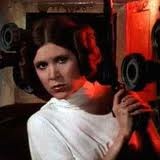 Part of what makes the Star Wars movies fun to rewatch – there was a marathon on Spike TV again this past weekend – is that there are always new gems to be discovered. I won’t admit to how many times I’ve watched each of the movies, in part or as a whole, but let’s just say I’ve watched them a lot. I feel like a treasure hunter, finding neat little clues in the dialogue or in the details of a particular room’s design. Weird stuff like that. What I have come to realize, through all these repeat viewings, is that greatness in storytelling is achieved in the details, some of which the creator bets we’re not even going to notice, at least not consciously.
Part of what makes the Star Wars movies fun to rewatch – there was a marathon on Spike TV again this past weekend – is that there are always new gems to be discovered. I won’t admit to how many times I’ve watched each of the movies, in part or as a whole, but let’s just say I’ve watched them a lot. I feel like a treasure hunter, finding neat little clues in the dialogue or in the details of a particular room’s design. Weird stuff like that. What I have come to realize, through all these repeat viewings, is that greatness in storytelling is achieved in the details, some of which the creator bets we’re not even going to notice, at least not consciously.
Visual stories – television and movies – make it a bit simpler to “show not tell.” It’s a concept that those weaving stories with the written word struggle more with, but I think there is a lot writers can learn from how movies work to “show” us things. For instance, take a character who’s destitute. Does someone – a narrator or another character – speak dialogue that labels the character as destitute? More than likely, no. Instead, they dress the character appropriately, perhaps place them in a setting that shows his or her poverty, have the actor use dialect or an idiom to suggest a poor upbringing. All of this is showing us information about the character.
Of course, every once in a while the “tell” is unavoidable; it’s just really about knowing when to use it. Many of us, though, grew up reading books, some of them considered masterpieces, that did a lot of telling. It can be hard to break away from a style that is imbued into our consciousness. The Hobbit, for instance, has pages and pages of telling, all world-building. Pride and Prejudice tells us in great detail Elizabeth’s thoughts. It’s important to remember that these books were written in a different age, where people spent more time reading and didn’t have the benefit of movies or television as competing sources of entertainment. These days we’re writing for a very visual society, and many readers like to “see” the story in their head as they read.
But showing rather than telling has other advantages, too. There is a higher level in storytelling that works discreetly, where the director or the writer uses our subconscious to guide how we respond to a character or a situation. Today I’m going to talk about color, and how its use can “show” us a great deal about a character – and often we don’t even realize how it’s utilizing biases already ingrained in our psyche.
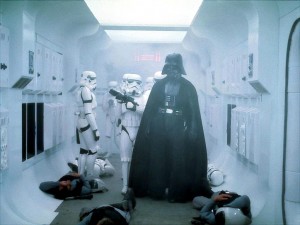 Imagine if you will that A New Hope opened with grey-colored stormtroopers marching into the corridors of the Tantive IV and Vader was suited up in a matching hue. Would his appearance have been as powerful? Would he have struck terror in our collective souls in quite the same way? The armor and the colors point your brain in certain directions; they direct us to what the storyteller wants us to think. Most importantly black-clad Vader suggests to the viewer straight up, “he’s bad – really bad, stuff of nightmares bad so go ahead and be afraid.” The other way to impart this type of information would have been to have someone state to the viewer through dialogue or narration that Vader was really bad – a “tell not show.” I think it’s pretty obvious Lucas picked the much more effective manner.
Imagine if you will that A New Hope opened with grey-colored stormtroopers marching into the corridors of the Tantive IV and Vader was suited up in a matching hue. Would his appearance have been as powerful? Would he have struck terror in our collective souls in quite the same way? The armor and the colors point your brain in certain directions; they direct us to what the storyteller wants us to think. Most importantly black-clad Vader suggests to the viewer straight up, “he’s bad – really bad, stuff of nightmares bad so go ahead and be afraid.” The other way to impart this type of information would have been to have someone state to the viewer through dialogue or narration that Vader was really bad – a “tell not show.” I think it’s pretty obvious Lucas picked the much more effective manner.
Next time a Star Wars Spike marathon comes on, try paying attention to all the colors, especially in what each character wears. Sure, Luke starts out in off-white and ends in black. But what about Han’s red blood-stripe on his pant leg; what does that suggest about his personality? (Pretend you don’t know the rest of his story.) It suggests that he’s earned some badge of honor. Why is it then yellow two movies later? My favorite subtle bit of storytelling through color involves Princess Leia in The Empire Strikes Back.
A Princess In Need of Rescue
Irvin Kershner approached ESB as a fairy tale, as opposed to the more comic book style of the first Star Wars film. Fairy tales have been defined broadly and differently over the years, but the consensus is that they don’t require fairies – instead they can encompass a wide range of fantastical elements and archetypal characters, such as princesses, gallant princes, magic helpers, ogres or trolls, and quick and concise storytelling. Oddly enough, Star Wars fit into the mold for the most part, but one of the most important characters did not.
Princess Leia rested on the edge of the traditional fairy tale princess archetype. Of course, she needed rescue out of her cell on the Death Star in the first movie – but once freed, she grabbed a blaster and immediately took charge. Throughout the first movie, she’s shown in a white dress. To the subconscious mind, this is meant to suggest she’s a virginal character, an innocent in some ways, even though we see the duality of her nature in her maturity in the face of war. In ESB, Leia is back in white; this time a more practical uniform, but the “show” of color and the implication of her virginal status remains.
 Like most fairy tales, Princess Leia in ESB does need to be rescued, but not because the evil witch has tempted her with an apple or she’s been duped into pricking her finger on a spinning wheel. Leia stays her post as the Rebel fleet escapes Hoth, and Han is bound and determined that she gets to her transport. Smuggler and scoundrel, Han isn’t what we’d expect as the dashing prince, but he’s got two things going for him – he wears his heart on his sleeve and, where Leia is concerned, chivalry isn’t dead. So while Luke is the soon-to-be Jedi Knight leaving on his own personal quest, Han is the fairy tale knight in shining armor to Leia’s princess-in-not-too-much-distress.
Like most fairy tales, Princess Leia in ESB does need to be rescued, but not because the evil witch has tempted her with an apple or she’s been duped into pricking her finger on a spinning wheel. Leia stays her post as the Rebel fleet escapes Hoth, and Han is bound and determined that she gets to her transport. Smuggler and scoundrel, Han isn’t what we’d expect as the dashing prince, but he’s got two things going for him – he wears his heart on his sleeve and, where Leia is concerned, chivalry isn’t dead. So while Luke is the soon-to-be Jedi Knight leaving on his own personal quest, Han is the fairy tale knight in shining armor to Leia’s princess-in-not-too-much-distress.
Fleeing Hoth, Leia is separated from the Alliance and the people that she believes need a Princess to lead them, and she is forced to confront the crisis that has been brewing inside her. One of the conceits of modern storytelling is that cowboys and pirates can get away with proclaiming their affection and not look like lovesick fools. A conceit of fairy tales is that princesses have to overcome obstacles before falling into the arms of her prince. Trapped with just Han and Chewbacca in the Millennium Falcon, Leia is buffered from all outside expectations – in other words, her self-imposed obstacles – and can’t avoid the conflicting emotions that usually arise when Han uses his unique Solo-charm.
 Of course, there is another conceit of romantic storytelling – that we’ll all get to witness the first kiss. So there’s Leia, dressed in her white uniform – which, by the way, is getting mighty dirty – struggling to restore a piece of equipment. In steps Han, who gallantly offers to help muscle the resistant handle back into place. Space cowboy certified cool, he conveniently places his arms around Leia; she pushes him out of her space. Persistent, Han moves on to her injured hand. Much ado is made by Leia about her state of cleanliness, but all this talk is just her internal conflict boiled down to its essence. She’s a princess, her hands aren’t supposed to be dirty, and she’s not supposed to be falling for a scoundrel, even if he is an honorable man.
Of course, there is another conceit of romantic storytelling – that we’ll all get to witness the first kiss. So there’s Leia, dressed in her white uniform – which, by the way, is getting mighty dirty – struggling to restore a piece of equipment. In steps Han, who gallantly offers to help muscle the resistant handle back into place. Space cowboy certified cool, he conveniently places his arms around Leia; she pushes him out of her space. Persistent, Han moves on to her injured hand. Much ado is made by Leia about her state of cleanliness, but all this talk is just her internal conflict boiled down to its essence. She’s a princess, her hands aren’t supposed to be dirty, and she’s not supposed to be falling for a scoundrel, even if he is an honorable man.
“You’re trembling,” Han notes. This is one little bit of “tell” that occurs in this scene, and it’s proof that when used correctly a “tell” can say a whole lot more than any amount of “show.” Imagine ten more lines of dialogue inserted into that scene to establish the relationship. Yeah, I know. Doesn’t really work well, does it?
Really, the art is knowing when to “show” and when to “tell” that progresses the story the best way possible. The cleverest part of the whole first kiss scene, though, is that it’s shot tight, so initially it appears as if Han’s swooping down to kiss Leia. When they cut away, Leia’s arm is up, wrapped around Han’s neck – and we’re shown that the Princess wasn’t quite so reluctant after all.
Sealing the Deal for What Will Follow
Let’s jump ahead for one second. Return of the Jedi opens with Leia, Luke, and Company rescuing Han Solo from the depths of Jabba the Hutt’s lair. So how do you get a principled Princess who sacrificed her royally posh life to lead a Rebellion to the point where she’d put all of that on hold to save one man? And how do you do that without chucking her previous characterization out the window? It’s easy – all you have to do is first seal the deal: show Leia committing to Han mind, body, and soul.
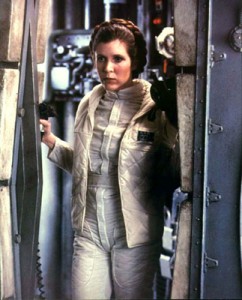 Oh, wait. One more sidebar first, back on the subject of Cars. Those films give us a story on multiple levels, one tale for children and another deeper version for adults. Straddling this line can be quite tricky, but storytellers often enjoy sinking mature themes into children’s fairy tales. The trick with any strong female character like Princess Leia is maintaining a sense of vulnerability and compassion that prevents her from coming off as a mean, sterile bitch or conversely, an easy floozy. For adults, vulnerability generally stems from our most intimate relationships. So how do you allow a fairy tale to maintain its childlike and naïve reflection of reality while at the same time signaling to the adults that Leia truly has dropped her royal shield and committed her heart – and body – to one man?
Oh, wait. One more sidebar first, back on the subject of Cars. Those films give us a story on multiple levels, one tale for children and another deeper version for adults. Straddling this line can be quite tricky, but storytellers often enjoy sinking mature themes into children’s fairy tales. The trick with any strong female character like Princess Leia is maintaining a sense of vulnerability and compassion that prevents her from coming off as a mean, sterile bitch or conversely, an easy floozy. For adults, vulnerability generally stems from our most intimate relationships. So how do you allow a fairy tale to maintain its childlike and naïve reflection of reality while at the same time signaling to the adults that Leia truly has dropped her royal shield and committed her heart – and body – to one man?
First of all, instinctively an adult is going to understand the rules inside Leia’s head. Rule number 221: Princesses don’t do that in their boyfriend’s car. But after the first kiss, by the time Han and Leia disembark at Cloud City, they are noticeably acting differently towards each other. Of course, it helps that Leia is just “Leia” when she’s introduced to Lando and she isn’t restricted by her royal or Rebel external expectations as she steps into Han’s world. Then Threepio gets lost and Chewbacca goes in search of the wayward droid, and the two lovebirds are all alone…
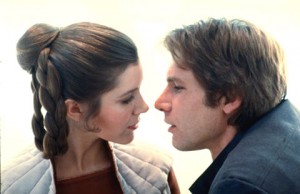 The biggest clue to what transpires offscreen comes in the drastic change in Leia’s attire. No longer in her virginal white uniform, she is shown in a dark red dress. Her hair is not quite as bound up, but now in more casual, freer braids. If you watch Han and Leia interact, they undoubtedly relate differently physically, in a more familiar manner. For a child, these are visual indications that the couple has progressed to fairy-tale love. Others will register the passionate tones of Leia’s attire and the freer hairstyle and subconsciously recognize that Han and Leia have finally progressed to letting their hair down – or in other words, a sexual relationship. Then there are those who will interpret their arc somewhere in between, and that’s fine. Therein lies the beauty in fairy tales, we can all take away what we’re ready for, but most importantly, the storyteller lets us in on the whole story, should we want or need it.
The biggest clue to what transpires offscreen comes in the drastic change in Leia’s attire. No longer in her virginal white uniform, she is shown in a dark red dress. Her hair is not quite as bound up, but now in more casual, freer braids. If you watch Han and Leia interact, they undoubtedly relate differently physically, in a more familiar manner. For a child, these are visual indications that the couple has progressed to fairy-tale love. Others will register the passionate tones of Leia’s attire and the freer hairstyle and subconsciously recognize that Han and Leia have finally progressed to letting their hair down – or in other words, a sexual relationship. Then there are those who will interpret their arc somewhere in between, and that’s fine. Therein lies the beauty in fairy tales, we can all take away what we’re ready for, but most importantly, the storyteller lets us in on the whole story, should we want or need it.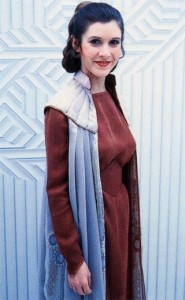
When Leia states that she knows Han will leave, her vulnerability is really thrust to the forefront, and she becomes a truly relatable character for women most importantly. I think this is one of the key reasons Leia has engaged so many female fans, because of how delicately and thoughtfully her sexual awakening occurred. ESB walked the tightrope between fairy tale and gritty emotional realism without ever looking like it was trying, and it was done with some masterful showmanship.
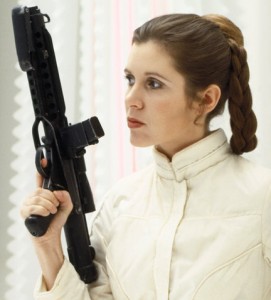 Interestingly enough, even though there is no obvious need for a storytelling purpose, once Leia is captured by Vader – her father, no less; think about what I say next – she is put back into the white uniform, but the hairstyle remains the unbound braids, signaling that she is forever changed. I believe the intention was to make her appearance in the colored dress more effective and more subtle. While those two things may seem at odds, that is the beautiful challenge of crafting a story, be it on screen or in words. Watching as an adult woman, Leia’s declaration of love is all the more painful, because while she had given her body to Han Solo, it’s obvious that up until the moment he was about to be taken from her, she had feared giving him her heart as well. But think about it – who holds back those words, the space cowboy or the princess? My guess is that in Kershner’s and Ford’s minds, Han already had proclaimed his love aloud, or “I know” wouldn’t have worked.
Interestingly enough, even though there is no obvious need for a storytelling purpose, once Leia is captured by Vader – her father, no less; think about what I say next – she is put back into the white uniform, but the hairstyle remains the unbound braids, signaling that she is forever changed. I believe the intention was to make her appearance in the colored dress more effective and more subtle. While those two things may seem at odds, that is the beautiful challenge of crafting a story, be it on screen or in words. Watching as an adult woman, Leia’s declaration of love is all the more painful, because while she had given her body to Han Solo, it’s obvious that up until the moment he was about to be taken from her, she had feared giving him her heart as well. But think about it – who holds back those words, the space cowboy or the princess? My guess is that in Kershner’s and Ford’s minds, Han already had proclaimed his love aloud, or “I know” wouldn’t have worked.
The characterization all starts to make sense, then – Leia’s absence from the Rebellion at the start of Return of the Jedi, her pursuit of a personal goal within a life that has been dedicated to the greater good – it’s really why she’s the gold standard for strong female heroines, and people have to look no farther than her role in the Original Trilogy to identify what works to create effective female characters that both men and women find compelling.
Next week I’ll discuss the iconic metal bikini from Return of the Jedi, and why I think Slave Leia isn’t meant to objectify or belittle women, but rather empowers them.
Writing Tip: If you’ve struggled with “show not tell,” here’s an exercise that may help. Pick a new character’s financial status – wealthy, middle-class, poor – and create a scene where you never actually “tell” the reader what their status is with any money-related adjectives. Explore what ways you can “show” the reader this same information indirectly. Create an image in your head of the character’s attire or their surroundings, then write it down. If you were going to film a scene to reveal the character’s wealth or poverty, what would the scene look like even if money was never mentioned in the dialogue or narration? You’ll find that “showing” actually can reveal more than just one trait at a time, and it also paints a better, more detailed picture of your character.
- Hyperspace Theories: Bad Luck Ghorman - June 2, 2025
- Hyperspace Theories: One Year Later as ANDOR Kicks Off Season Two - May 15, 2025
- REVIEW: Tales of the Underworld - May 4, 2025








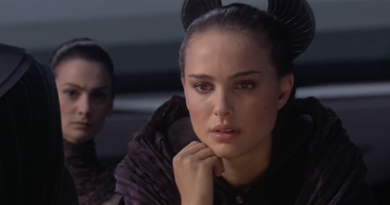
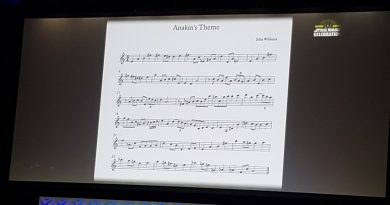
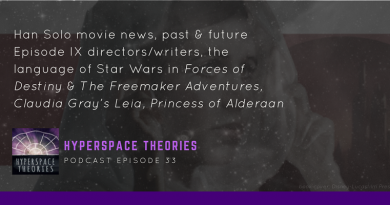
This was very interesting and insightful. I will be looking at Star Wars with different eyes now. My first time seeing Star Wars was in 1977 at the age of 24. This old Jedi is nearly 58 now. I seem to pick out the musical score first then the story. I took piano for 8 years (8-16 years old). Interesting to see what catches our eyes and / or ears first. I saw this blog mentioned on the Forcebook and I added it to my favorites, I am Kenobisgirl on Forcebook. I am very interested in reading future blogs and can’t wait for you next blog on Princess Leia. I also like that George Lucas gives us strong women in his stories. Thank you for writing this. MTFBWY!!!
Pingback:Does Slave Leia Weaken or Empower Women? « fangirlblog.com
Pingback:What Is Strong? « fangirlblog.com
Pingback:Coffee With Kenobi Show # 4: The Role of Women in the Star Wars Universe |
I finally got a chance to read your article on Leia and clothing (like we discussed on the show), and it’s awesome! I still believe that Han never told Leia he loved her until Jedi, but this was, in fact, and excellent example of show, don’t tell through his actions, as well as his purpose. His sacrifice for his love and his friends enhances his characterization that can, at times, be forgotten once Jedi comes out, and Han becomes a secondary character in the Saga.
I am really excited by the show, don’t tell aspect of this, as I mention this every single day in Creative Writing. I am going to use this article as documentation. Yes!
Pingback:Slave Leia Deserves Equal Treatment: Respecting Star Wars Canon | FANgirl Blog